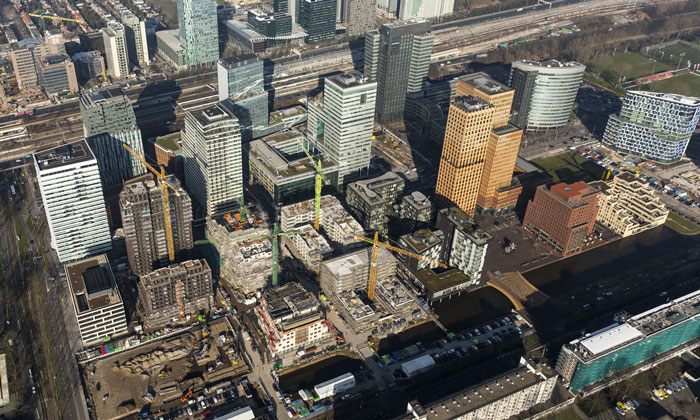A definitive guide to what will change in aviation over the next 20 years | (11-15)
What will define the next 20 years in aviation? Which technologies, challenges, regions and innovations will shape the future of our industry? Find out here…

As International Airport Review builds up throughout 2017 to our 20 year anniversary issue in the Autumn, we’ll be running a monthly online feature that celebrates the top 20 of all things aviation. The latest instalment, that follows on from our analysis of the top 20 world airports and top 20 airports by passenger number, is one that specifically looks forward.
International Airport Review‘s guide to the 20 defining factors that will change airport and aviation over the next two decades does not necessarily look at each aspect in order of importance but crucially includes those we firmly believe to be the 20 innovations, challenges and general phenomena that hold a valid claim to their inclusion in our list.
Here are the next five entries including: the role of app-based technology, the increasing prominence of airport cities, an exploration of cargo’s future and the exciting prospect of augmented reality.
We hope you agree with our choices. Enjoy!
#15 Apps & beacons
Apps and beacon-integration could revolutionise seamless travel
Apps are omnipresent. Anyone with a smartphone by definition uses an app in some shape or form. We are beginning to see a shift in the airport and aviation industry towards an increasingly number of airport and airlines offering an app. For example, London Heathrow offers a concierge app named Heathrow Airport Guide that offers consistent support to the passenger travelling through an airport. Be it real-time flight information, maps and useful information or easier booking possibilities for say parking or special assistance, in our opinion, the global shift to mobile and airport and aviation’s embrace of this fits International Airport Review‘s belief that we are witnessing the supremacy of ‘seamless travel’ in the modern airport world. Apps can offer a personal touch, increased efficiency and a technologically-current means of easily transmitting information.
Further to this, apps and mobile technology have the potential to be used in harmony with beacons to offer a personal touch to a passenger’s experience in an airport.
Miami International Airport (MIA), for example is already showing the rest of the world what’s possible with beacons, with its location-aware app. The airport has leveraged beacons across its entire campus to create a personalised experience more akin to a concierge service than your standard airport experience.
The app provides full coverage of the airport and as travellers make their way through the airport, the app provides information and support that is relevant to their individual journey, including updates on their gate, flight times and baggage collection, as well as nearby food and retail outlets, prioritising suggestions based on their current location. And with ‘blue-dot’ functionality, map rotation, turn-by-turn directions, ‘walk times’ and a ‘near me’ feature, they allow passengers to quickly locate virtually anything inside the airport.
Not only do apps empirically benefit the passenger’s experience when travelling by air, they also have the capacity to encourage revenue generation through push notifications of special tailored offers or by simply promoting the idea of brand loyalty be it for an airport or airline by the very fact that the passenger has their specific app downloaded onto a device.
The future of personalised passenger experience looks mobile, app-centric and seamless.
#14 Airport cities

Construction ongoing at Amsterdam Zuidas
Having discussed Chinese airport expansion in the first instalment of our countdown, the world’s most populous country further demonstrates the emergence and proliferation of the airport city model. The aforementioned Zhengzhou is an east-central provincial capital barely known outside of China. By the year 2030, it is predicted that its airport’s two terminals and five runways that are to be built will be able to handle 70m passengers yearly. The city has plans to become an aerotropolis seven times the size of Manhattan but unlike JFK which lies over ten miles south east of Manhattan, Chinese planners aim for the city of Zhengzhou to be built around its airport.
Zhengzhou, an example of the concept of an airport city, will be surrounded by factories, research and development facilities, homes, exhibition spaces and much more.
“Aerotropolis: The Way We’ll Live Next” written in 2011 and written by John Kasarda envisages the future as defined by “the ubiquity of jet travel, round-the-clock workdays, overnight shipping, and global business networks has turned the pattern inside out. Soon the airport will be at the centre and the city will be built around it, the better to keep workers, suppliers, executives, and goods in touch with the global market.”
In essence, a city will no longer be defined as a large settlement with an airport on it periphery but rather as an airport with a city built around it.
read more : https://tinyurl.com/mdqgdot

